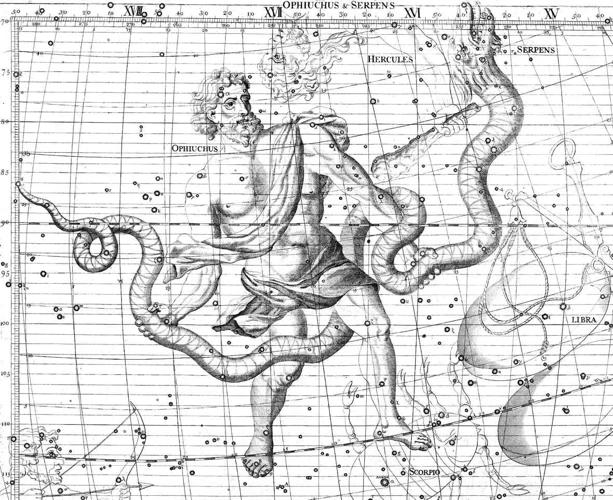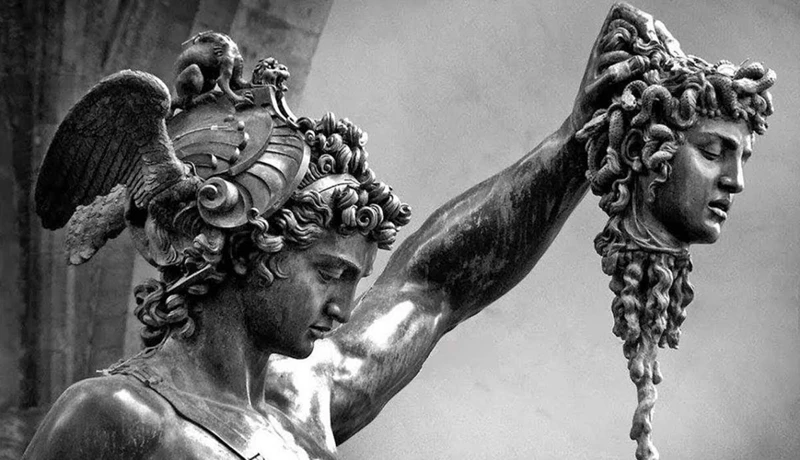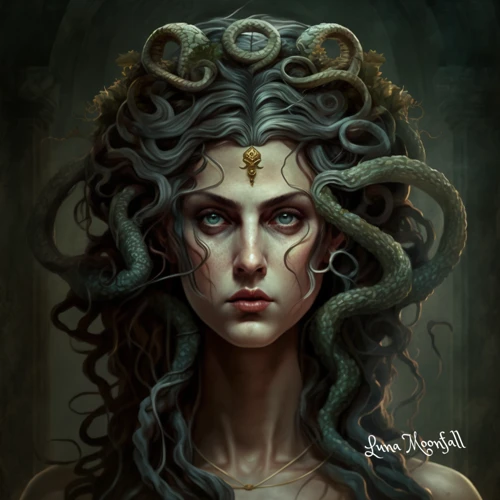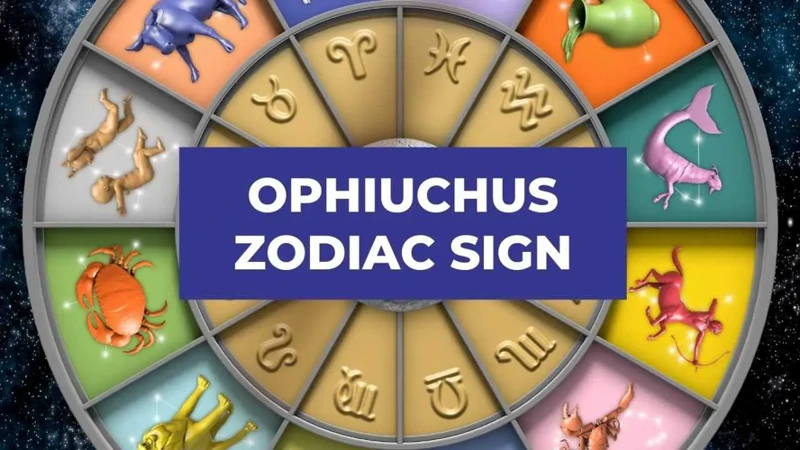When it comes to Greek mythology, few characters are as intriguing and enigmatic as Medusa, the infamous Gorgon. With her serpentine hair, terrifying gaze, and ability to turn anyone who looked at her to stone, Medusa is a tale that has captivated audiences for centuries. In this article, we will delve into the origins of this infamous creature, exploring her birth, lineage, appearance, and unique abilities. We will also uncover the curse that led to her transformation into a Gorgon, as well as the legendary quest of Perseus and his ultimate victory over her. Additionally, we will explore the legacy and symbolism of Medusa, including her portrayal in art and literature. Join us on this mythological journey as we unravel the mysteries surrounding Medusa and discover the enduring power of her story.
Contents
- The Origins of Medusa
- The Curse and Transformation
- Perseus and the Defeat of Medusa
- Medusa’s Legacy and Symbolism
- Conclusion
-
Frequently Asked Questions
- 1. Who were Medusa’s parents?
- 2. Were all of Medusa’s sisters immortal?
- 3. How did Medusa acquire her infamous snake hair?
- 4. What were Medusa’s abilities?
- 5. Did Medusa have any romantic relationships?
- 6. Was Medusa always monstrous?
- 7. How did Perseus defeat Medusa?
- 8. What happened to Medusa’s head after her death?
- 9. Was Medusa’s head used as a protective symbol?
- 10. How has Medusa influenced art and literature?
- References
-
Frequently Asked Questions
- 1. Who were Medusa’s sisters?
- 2. What did Medusa look like?
- 3. How was Medusa born?
- 4. What were Medusa’s abilities?
- 5. Why did Athena punish Medusa?
- 6. What happened to Medusa after being cursed?
- 7. How did Perseus defeat Medusa?
- 8. What is the meaning of Medusa’s head as a protective symbol?
- 9. How is Medusa portrayed in art and literature?
- 10. What is the legacy of Medusa?
- References
- Read More
The Origins of Medusa

According to Greek mythology, Medusa was born to the sea deities, Phorcys and Ceto. She was one of the three Gorgon sisters, along with Stheno and Euryale. However, unlike her immortal sisters, Medusa was mortal. Her lineage can be traced back to the ancient gods of the sea, making her a unique and powerful being. With her serpentine hair and captivating looks, Medusa was both feared and revered.
Medusa’s appearance was unlike any other. Not only did she possess the typical features of a Gorgon, such as the snake hair and reptilian skin, but she also had the power to turn anyone who looked directly at her into stone. Her stunning yet terrifying gaze was a force to be reckoned with, and it added to her mystique and danger. It was said that her eyes held an otherworldly power that could freeze anyone in their tracks, making them petrified and helpless.
Medusa was not the only Gorgon in Greek mythology. Her sisters, Stheno and Euryale, also possessed the same serpentine features and dreaded gaze. However, unlike Medusa, who was mortal, Stheno and Euryale were immortal. They all shared a unique bond as sisters, and together they were known as the Gorgons, creatures of immense power and terror. Their intertwined stories continue to intrigue and fascinate to this day.
This section explores the origins of Medusa, shedding light on her birth, lineage, appearance, and remarkable abilities. It also introduces her immortal sisters, Stheno and Euryale, who together form the trio of dreaded Gorgons. The next section will delve into the curse that befell Medusa and her transformation into a monstrous Gorgon. Stay tuned to discover the true extent of Medusa’s fate and the tale of Perseus, the hero who faced her formidable power.
Birth and Lineage
Medusa’s birth and lineage can be traced back to the sea deities, Phorcys and Ceto. These ancient gods of the sea played a significant role in Greek mythology, and Medusa emerged as one of their notable offspring. Born into this divine lineage, Medusa inherited a unique blend of beauty and danger. While her sisters, Stheno and Euryale, were immortal like their parents, Medusa possessed a mortal nature. This distinction made her a captivating and tragic figure in Greek mythology. As a mortal, Medusa’s vulnerability added an extra layer of complexity to her character, emphasizing the delicate balance between power and mortality in the ancient world. Although her lineage was exceptional, Medusa’s ultimate destiny would be defined by a curse and an encounter with the hero Perseus. The next section will explore the curse that led to Medusa’s transformation into a monster and the extraordinary power of her gaze. Discover the captivating tale of Medusa’s fate and the heroic quest of Perseus in the following section of this article.
Appearance and Abilities
Medusa’s appearance was undeniably striking and incredibly terrifying. Her most distinctive feature was her hair, which was composed entirely of venomous snakes, their slithering forms intertwining and writhing upon her head. This peculiar attribute served as a prominent symbol of her connection to the serpentine realm and added to her fearsome aura. It was believed that each snake possessed its own life force and could strike out at anyone who dared to approach.
Aside from her snake hair, Medusa possessed a face that was described as both alluring and terrible. Her piercing eyes held a hypnotic quality, capable of mesmerizing anyone who met her gaze. Those unfortunate enough to lock eyes with her would find themselves instantly petrified, transformed into lifeless statues forever cursed to stand as testament to her power.
As a Gorgon, Medusa possessed immensity in strength and endurance. Her reptilian skin was said to be impervious to most attacks, making her nearly invulnerable in battle. Combined with her ability to turn enemies to stone with a single look, Medusa was an adversary to be greatly feared and respected.
This section delves into Medusa’s appearance and abilities. It highlights her unique and terrifying features, such as her venomous snake hair and paralyzing gaze. It also emphasizes her immense strength and invulnerability as a Gorgon. In the next section, we will explore the curse that befell Medusa, leading to her transformation into a monstrous creature. Stay tuned to discover the tragic fate of this formidable figure from Greek mythology.
Medusa’s Sisters: The Gorgons
Medusa’s sisters, Stheno and Euryale, were an integral part of the Gorgon trio. Like Medusa, they were terrifying creatures with serpents for hair and the ability to turn people to stone with their gaze. However, there were distinct differences between the sisters.
Stheno was the eldest and the most ferocious of the three. She was known for her unwavering strength and her unrelenting pursuit of vengeance. Euryale, on the other hand, was the middle sister and had a more tempered disposition. She possessed a cunning intellect that often allowed her to outwit her enemies. Together, the three Gorgons were a formidable force, striking fear into the hearts of those who encountered them.
While Medusa was mortal, Stheno and Euryale were immortal, making them even more powerful and enduring. Their immortality added another layer of complexity to their mythology, highlighting their eternal existence and influence. The sisters’ intertwined history and shared traits cemented their status as iconic figures in Greek mythology.
The Gorgons’ representation in art and literature is abundant, as their fearsome visages captivated the imaginations of countless artists and writers throughout history. Their likenesses, with Medusa’s being the most prominent, can be found in various forms of artistic expressions, from sculptures and paintings to emblems and jewelry. The Gorgons continue to be symbolic representations of power, danger, and mystery in the realm of gods and goddesses, showcasing the enduring impact of their myth within popular culture.
The next section of this article will explore the curse that changed Medusa’s life forever, leading to her transformation into a monstrous Gorgon. Discover the intricacies of Athena’s punishment and the unique power of Medusa’s gaze in the subsequent section.
The Curse and Transformation

The curse and transformation of Medusa is a pivotal and tragic part of her mythological story. As the tale goes, Medusa’s fate takes a dark turn when she catches the attention of the goddess Athena. It all began when Poseidon, the god of the sea, took an interest in Medusa and they had a rendezvous in Athena’s temple. Enraged by this desecration of her sacred space, Athena punished Medusa with a horrific curse.
Under the wrathful gaze of Athena, Medusa’s beautiful locks of hair were transformed into a writhing nest of venomous snakes. This physical transformation was not the only consequence of Athena’s curse. Medusa, now a Gorgon, gained the power to turn anyone who looked directly at her into stone with a single glance. Her once captivating beauty became a terrifying and petrifying force, forever frozen in her monstrous form.
It is important to note that while Medusa’s transformation into a Gorgon was a curse, it also served a symbolic purpose. The snake hair and ability to turn others to stone represented the fearsome and lethal power she now possessed. The curse not only punished Medusa for her transgressions but also served as a way to protect Athena’s divine realm from future intrusion. This duality of punishment and protection adds layers of complexity to Medusa’s story.
The curse and transformation of Medusa are central to understanding her role as a Gorgon and the challenges she posed to those who crossed her path. In the next section, we will explore the prophecy that foretold Medusa’s demise and the epic quest of Perseus, the hero who sought to confront her. Stay tuned to unravel the intricacies of Medusa’s fate and the remarkable journey that would lead to her downfall.
Athena’s Punishment
When Medusa caught the eye of Poseidon, the sea god, in Athena’s temple, the goddess of wisdom and warfare was overcome with fury. Athena felt betrayed, for her temple was meant to be a sacred place. In her anger, she decided to punish not only Medusa but also her sisters by transforming them into hideous creatures. Athena cursed Medusa by turning her once beautiful hair into venomous serpents and bestowing upon her the power to turn anyone who looked at her into stone.
Athena’s punishment was swift and severe, forever altering Medusa’s fate. The once enchanting woman became a feared monster, her gaze capable of petrifying anyone unfortunate enough to meet her eyes. It was a harsh reminder of the consequences of defying the gods and the power they held over mortals.
Athena’s punishment not only served to satisfy her wrath but also acted as a deterrent to others who might dare to disrespect the gods. It was a reminder of the gods’ authority and the consequences of crossing them. The impact of Athena’s curse on Medusa’s life was profound, forever transforming her into a Gorgon and setting the stage for the legendary events that would soon unfold.
This section dives into Athena’s punishment of Medusa, highlighting the goddess’s anger and the reasons behind her decision to curse Medusa and her sisters. The next section will explore the unique power of Medusa’s gaze and the consequences it had on those who encountered it. Stay tuned to unravel the mysteries surrounding the infamous Gorgon and her terrifying abilities.
The Power of Medusa’s Gaze
The power of Medusa’s gaze is a central aspect of her mythological legend. It is said that anyone who looked directly into her eyes would be immediately turned to stone. This ability made her one of the most feared creatures in Greek mythology and added to her reputation as a formidable adversary. The gaze of Medusa was not only physically dangerous but also symbolized her ability to petrify and paralyze her victims with fear.
The exact mechanism behind Medusa’s gaze is not explicitly described in the myths, but it is believed to be a curse placed upon her by the goddess Athena. It was Athena who punished Medusa for desecrating her temple by transforming her into a hideous monster with snakes for hair and the power to turn others to stone. This curse served as a reminder of the consequences of hubris and disrespect towards the gods.
The power of Medusa’s gaze extended beyond her physical appearance. It was a metaphorical representation of the destructive nature of vanity and the dangers of looking too deeply into one’s own reflection. Medusa’s gaze was a warning against the perils of narcissism, encouraging individuals to look beyond superficial appearances and to recognize the importance of inner beauty and character.
In art and literature, Medusa’s gaze has been depicted in various ways. Artists have tried to capture the hypnotic and paralyzing effect of her eyes, imbuing their representations with a sense of danger and awe. The symbolism of her gaze is still relevant today, serving as a cautionary tale and a reminder of the power and consequences of unchecked vanity.
This section explores the power of Medusa’s gaze, emphasizing its ability to turn victims to stone and its metaphorical significance as a warning against vanity and excessive self-absorption. The article will continue with the next section, delving into the fate of Medusa as a Gorgon monster and the quest of Perseus to defeat her. To learn more about the symbolic representations of gods, goddesses, and myths, you can check out the link here.
Medusa’s Fate: A Gorgon Monster
Medusa’s fate took a dark turn when she encountered the goddess Athena. It is said that Medusa and her sisters caught the attention of Athena due to their beauty and boldness. However, Athena, the goddess of wisdom and war, became enraged when she discovered that Poseidon, the god of the sea, had seduced Medusa in one of Athena’s temples. In her fury, Athena decided to punish Medusa for her transgression.
Using her divine powers, Athena transformed Medusa into a monstrous Gorgon. Medusa’s once beautiful locks of hair were replaced by a writhing mass of venomous snakes. Her previously captivating gaze, which had mesmerized many, now possessed the power to turn anyone who looked directly at her to stone. With her new form, Medusa became a symbol of terror and a creature to be feared.
As a Gorgon, Medusa was banished to live in solitude on an isolated island. Surrounded by the statues of those unfortunate enough to cross her path, she became a figure of myth and legend. Her fate as a Gorgon monster served as a reminder of the consequences of defying the gods and the power of their punishments.
This section delves into the tragic fate that befell Medusa and explores her transformation into a terrifying Gorgon monster. It highlights the role of the goddess Athena in her punishment and the formidable changes that occurred in Medusa’s appearance and abilities. The following section will introduce the hero Perseus and his quest to defeat Medusa, leading to a dramatic turning point in her story. Stay tuned to uncover the thrilling events that unfolded and the legendary battle between Medusa and Perseus.
Perseus and the Defeat of Medusa

Perseus, the legendary hero of Greek mythology, embarked on a daring quest to defeat Medusa and bring an end to her terrifying reign. It all began with a prophecy that foretold a future event in which Perseus would slay Medusa. Determined to fulfill his destiny, Perseus sought guidance and assistance from the gods.
To aid him in his quest, Perseus received a special helmet of invisibility from Hades, the god of the underworld. This magical artifact allowed him to move undetected and avoid the deadly gaze of Medusa. Additionally, Perseus was given a pair of winged sandals by Hermes, the messenger god. These sandals allowed him to fly swiftly to his destination, granting him an advantage in his battle against the Gorgon.
Armed with these divine gifts, Perseus set off on his journey to Medusa’s lair. He carefully approached, ensuring that he could view her reflection on his polished shield rather than facing her directly. This clever tactic allowed him to avoid the petrifying gaze and swiftly strike Medusa down with his sword.
Upon defeating Medusa, Perseus accomplished his mission and successfully cut off her head. The tale of Medusa’s gaze turning people to stone came to an end with her demise. Interestingly, even in death, Medusa’s head retained its power. Perseus utilized her head as a weapon, using it to petrify his enemies and as a protective tool.
The defeat of Medusa by Perseus marked a significant victory in Greek mythology. It showcased the hero’s bravery and resourcefulness in overcoming such a formidable foe. The story of Perseus and Medusa has been retold in countless works of art, literature, and even in modern interpretations, perpetuating its significance throughout history.
This section delves into the epic tale of Perseus and his courageous quest to defeat Medusa. It explores the prophetic nature of his journey, the divine gifts he received, and the strategies he employed to vanquish the dreaded Gorgon. The following section will uncover the legacy and symbolism of Medusa, including her head being used as a protective symbol known as the Gorgoneion. Stay tuned to discover the enduring impact and representation of Medusa in art, literature, and culture.
Prophecy and Quest
When it comes to the tale of Medusa, prophecy played a significant role in her story. It was foretold by the Oracle that Medusa would meet her demise at the hands of a hero. This prophecy set the stage for the daring quest of Perseus, who would ultimately face the Gorgon and seek to fulfill his destiny. With the weight of destiny on his shoulders, Perseus embarked on a perilous journey to find and defeat Medusa.
To aid him in this quest, Perseus received divine assistance from the gods. He was gifted a polished shield, which he would later use as a reflection to avoid looking directly at Medusa. Hermes, the messenger of the gods, also provided Perseus with a pair of winged sandals, granting him the agility and swiftness needed for his mission. Additionally, Athena, goddess of wisdom and warfare, bestowed upon Perseus a polished bronze shield and a sword to aid him in his battle against the Gorgon.
Equipped with these divine tools, Perseus ventured forth on his dangerous mission. He traveled to the lair of the Gorgons, where he encountered the petrifying gaze of Medusa. Remembering the advice of the Oracle, Perseus looked at the reflection of Medusa in his shield, allowing him to safely approach her without being turned to stone.
With a swift strike, Perseus beheaded Medusa, ending her reign of terror. The quest that was foretold by the prophecy had come to fruition. Perseus emerged victorious and returned to his homeland with the severed head of Medusa, a symbol of his triumph.
This section focuses on the prophecy surrounding Medusa and the quest of Perseus. The prophecy served as the catalyst for Perseus’ journey to defeat the Gorgon, leading him to receive divine aid and acquire the necessary tools for his mission. Stay tuned as we delve into the dramatic events leading to Medusa’s demise and the ultimate fate of her severed head.
The Helmet of Invisibility and Winged Sandals
During his quest to defeat Medusa, Perseus was aided by various divine gifts, including the Helmet of Invisibility and the Winged Sandals. These powerful artifacts were bestowed upon him by the gods to ensure his success in facing the formidable Gorgon. The Helmet of Invisibility, crafted by the god of blacksmiths, Hephaestus, granted Perseus the ability to become unseen at will. When he wore the helmet, he became invisible to both mortals and immortals alike, enabling him to approach Medusa undetected. This allowed him to maneuver through her lair without being turned to stone by her petrifying gaze. The Winged Sandals, a gift from the messenger of the gods, Hermes, gave Perseus the ability to fly swiftly and gracefully. With these sandals, he could soar through the skies with ease, evading any potential threats as he made his way to confront Medusa. The combination of the Helmet of Invisibility and the Winged Sandals provided Perseus with the necessary tools to overcome the challenges that lay ahead.
Medusa’s Death and Perseus’ Victory
In Greek mythology, the tale of Medusa reaches its climax with her eventual death at the hands of the hero Perseus. Medusa’s death and Perseus’ victory over her were the result of a perilous and divine quest. Recognizing the danger posed by Medusa’s petrifying gaze, Perseus sought the assistance of the gods Athena and Hermes. Athena, the goddess of wisdom and battle strategy, provided Perseus with a polished shield like a mirror, enabling him to look at Medusa’s reflection instead of directly at her. Hermes, the swift messenger of the gods, presented Perseus with winged sandals and a helmet of invisibility. Equipped with these powerful artifacts, Perseus embarked on his mission to slay the Gorgon.
Guided by the gods and utilizing his newfound tools, Perseus infiltrated the lair of the Gorgons, fighting against the odds. The hero carefully avoided direct eye contact with Medusa, using his shield to catch glimpses of her reflection, allowing him to strike without turning to stone. With a swift and decisive blow, Perseus decapitated Medusa, effectively ending her reign of terror.
Perseus’ victory over Medusa was not only a triumph over a formidable opponent but also a significant moment in Greek mythology. It solidified Perseus’ reputation as a legendary hero and showcased the power of divine intervention. By defeating Medusa, Perseus demonstrated his bravery, resourcefulness, and skill in overcoming seemingly insurmountable odds.
This section highlights the dramatic conclusion of Medusa’s story, focusing on her death at the hands of Perseus. It also emphasizes the crucial role played by Athena and Hermes in aiding Perseus on his quest. The next section will explore the legacy and symbolism of Medusa, shedding light on the enduring impact of her mythological tale. Stay tuned to discover how Medusa’s story continues to captivate and inspire in various artistic and literary forms.
Medusa’s Legacy and Symbolism

Medusa’s legacy and symbolism have left a lasting impact on various aspects of culture and art. One of the most significant representations of her is the Gorgoneion, which is the depiction of Medusa’s head. The Gorgoneion was used as a protective symbol in ancient Greece, believed to ward off evil and provide a safeguard against danger. It was commonly placed on shields, armor, and buildings, serving as a talisman of protection and a symbol of power.
Medusa’s story has also found its way into numerous works of art and literature throughout history. Paintings, sculptures, and even contemporary artwork often feature Medusa, showcasing her as a captivating and fearsome figure. She has been portrayed by various artists, each adding their own interpretation and bringing her character to life. From classical representations to modern interpretations, Medusa continues to captivate viewers with her intriguing presence.
In addition to art, Medusa’s tale has inspired a wide range of literary works. She has become a symbol of female empowerment and resilience, representing the strength and defiance of women in the face of adversity. Her story has been reimagined and retold in countless novels, plays, and poems, resonating with audiences across different generations.
The symbolism of Medusa extends beyond her appearance and abilities. It delves into themes of transformation, fear, and the power of gaze. Medusa’s ability to turn people to stone with a single look has come to represent the paralyzing effects of fear and the consequences of unchecked desire. Her story serves as a cautionary tale, reminding us of the need to confront our inner demons and face the shadows within ourselves.
As her legacy continues to endure, Medusa remains a powerful and thought-provoking figure. Her symbolism transcends time and carries deep meaning, making her an intriguing subject of exploration and interpretation. Whether as a protective symbol or a representation of inner strength, Medusa’s legacy continues to inspire and fascinate those who delve into the depths of Greek mythology.
Note: There are no relevant anchors that require internal HTML links in this section.
Gorgoneion: Medusa’s Head as a Protective Symbol
The severed head of Medusa, known as the Gorgoneion, holds a significant place in ancient Greek symbolism and mythology. It became a powerful protective symbol that was believed to ward off evil and bring good fortune to those who possessed it. The significance of the Gorgoneion can be seen in its widespread use in various forms of art, architecture, and personal adornments.
The Gorgoneion was often depicted as a stylized representation of Medusa’s head, featuring her wild, snake-like hair and glaring eyes. It was believed that the mere image of Medusa’s horrifying face would be enough to scare away any potential threats or dangers. The Gorgoneion was especially popular as an apotropaic symbol, used to avert the evil eye and protect against malicious forces.
The protective power of the Gorgoneion was highly regarded, and it adorned many objects and structures. It was commonly seen on shields, armor, and weapons, serving as a guardian against adversaries in battle. It was also incorporated into architecture, such as on temples and gateways, as a means of safeguarding sacred spaces. Additionally, the Gorgoneion was worn as a talisman or charm, often in the form of amulets or pendants, to provide personal protection.
The Gorgoneion’s significance extended beyond its role as a protective symbol. It also represented the power and strength of female divinity. Medusa, despite her monstrous appearance, was a formidable force to be reckoned with. By wearing or displaying the Gorgoneion, individuals could tap into this power and invoke the goddess-like qualities associated with Medusa.
The legacy of the Gorgoneion in Greek mythology continues to be celebrated and appreciated in modern times. Its recognizable image is still utilized in various artistic forms and is often associated with themes of protection, strength, and feminine power. The symbol serves as a reminder of the rich and complex mythology of ancient Greece and the enduring allure of Medusa and her tragic story.
This section explores the significance of Medusa’s severed head, known as the Gorgoneion, as a protective symbol in Greek mythology. It touches upon its use as a talisman, its appearance on shields and armor, and its representation of female divinity and power. The next section will delve into how Medusa has been portrayed in art and literature throughout history. Stay tuned to unravel the timeless fascination with this captivating Gorgon.
Medusa in Art and Literature
Medusa’s captivating story has transcended the realms of myth and influenced various forms of art and literature throughout history. Her iconic image, with snakes for hair and a petrifying gaze, has inspired countless artists, writers, and poets. In ancient Greek pottery and sculpture, Medusa was often depicted as a terrifying figure with bulging eyes, protruding tongue, and snaky tendrils for hair. These representations aimed to capture her monstrous nature and evoke a sense of fear and awe in the viewers.
Medusa’s image also found its way into later periods of art, such as the Renaissance, where she was portrayed as a more attractive and tragic figure. Artists like Caravaggio and Bernini depicted Medusa’s snake-covered head in their masterpieces, highlighting her power and allure.
In literature, Medusa’s story has been retold in numerous forms. From Ovid’s “Metamorphoses” to works by modern-day authors, her tale continues to ignite the imaginations of writers. The symbolic significance of Medusa’s gaze and the transformative power she possesses serve as rich material for exploring themes of fear, temptation, and the consequences of hubris.
One notable example is the poem “Medusa” by the English poet Carol Ann Duffy, which offers a fresh perspective on Medusa’s character and the feeling of isolation she experiences. Through the use of vivid imagery and introspective language, the poem delves into Medusa’s emotional journey and the complexities of her existence.
Medusa’s mythical character has left an indelible mark on art and literature. Her image has been immortalized in various forms, from ancient Greek art to contemporary works. Artists and writers continue to draw inspiration from her fascinating story, exploring themes of power, transformation, and the dangers of unchecked beauty. Medusa’s enduring presence in art and literature speaks to the timeless allure and universal appeal of Greek mythology.
Conclusion

In conclusion, the story of Medusa is a captivating and enduring tale from Greek mythology. Her origins as a mortal Gorgon, born to the sea deities Phorcys and Ceto, set her apart from her immortal sisters, Stheno and Euryale. Medusa’s appearance, with her striking serpentine hair and petrifying gaze, made her a fearsome and enchanting figure. However, her fate took a tragic turn when she incurred the wrath of the goddess Athena due to a curse that transformed her into a monstrous Gorgon. Medusa’s story intertwines with that of the hero Perseus, who ultimately defeated her with the aid of the Helmet of Invisibility and Winged Sandals.
Medusa’s legacy extends beyond her defeat, with her severed head, known as the Gorgoneion, becoming a powerful protective symbol in ancient Greece. This symbol can be seen adorning shields, buildings, and even jewelry, serving as a ward against evil and danger. Furthermore, Medusa’s story has inspired countless works of art and literature, highlighting her enduring presence in popular culture.
The tale of Medusa is a testament to the power of mythology, showcasing themes of beauty, power, and the consequences of hubris. It serves as a reminder of the complexity of Greek mythology and the many fascinating creatures and characters that populate it. Exploring the intriguing and symbolic representations of gods, goddesses, and myths continues to provide a deeper understanding of ancient civilizations and their beliefs. To learn more about the symbolism and mythological connections, you can explore the fascinating world of healing deities and the charismatic charm of Ophiuchus personalities.
Frequently Asked Questions

1. Who were Medusa’s parents?
Medusa was the daughter of the sea deities, Phorcys and Ceto.
2. Were all of Medusa’s sisters immortal?
No, Medusa’s sisters, Stheno and Euryale, were immortal, while Medusa herself was mortal.
3. How did Medusa acquire her infamous snake hair?
Medusa’s snake hair was a result of a curse placed upon her by the goddess Athena, as punishment for desecrating her temple.
4. What were Medusa’s abilities?
Medusa possessed the power to turn anyone who looked directly at her into stone, thanks to her deadly gaze.
5. Did Medusa have any romantic relationships?
According to legends, Medusa was pursued by the sea god Poseidon, which eventually led to her transformation into a Gorgon.
6. Was Medusa always monstrous?
No, Medusa was initially a beautiful maiden, but after her transformation into a Gorgon, she became a terrifying creature.
7. How did Perseus defeat Medusa?
Perseus was aided by various items, including a reflective shield to avoid direct eye contact and a sword given to him by Hermes. Using these tools, he managed to slay Medusa while looking at her reflection in the shield.
8. What happened to Medusa’s head after her death?
After Medusa’s death, Perseus used her severed head as a weapon, utilizing its petrifying gaze to turn his enemies to stone.
9. Was Medusa’s head used as a protective symbol?
Yes, Medusa’s severed head, known as the Gorgoneion, was often used as a protective symbol to ward off evil and enemies.
10. How has Medusa influenced art and literature?
Medusa’s story has inspired countless works of art and literature, showcasing her beauty, power, and the intricate symbolism associated with her in various cultures around the world.
References
Frequently Asked Questions

1. Who were Medusa’s sisters?
Medusa had two sisters named Stheno and Euryale. Together, they were known as the Gorgons.
2. What did Medusa look like?
Medusa was a terrifying creature with snakes in place of hair. Her skin was pale, and her eyes were fiery red.
3. How was Medusa born?
According to Greek mythology, Medusa was born from the sea god Poseidon and the sea nymph Ceto.
4. What were Medusa’s abilities?
Medusa possessed the power to turn anyone who looked into her eyes into stone. She was also known for her agility and strength.
5. Why did Athena punish Medusa?
Athena punished Medusa because Medusa and Poseidon had desecrated one of Athena’s temples by making love in it.
6. What happened to Medusa after being cursed?
After being cursed, Medusa transformed into a hideous monster with snakes for hair and a gaze that turned people to stone.
7. How did Perseus defeat Medusa?
Perseus defeated Medusa by using the reflection on his shield to avoid looking directly into her eyes. He then cut off her head with a sword.
8. What is the meaning of Medusa’s head as a protective symbol?
Medusa’s head, known as the Gorgoneion, was believed to have protective powers. It was often used as a symbol to ward off evil and bring good luck.
9. How is Medusa portrayed in art and literature?
Medusa is a popular subject in art and literature. She is often depicted as a fearsome creature with snakes for hair, showcasing her power and ability to turn people to stone.
10. What is the legacy of Medusa?
Medusa’s legacy lives on through her portrayal in mythology, art, and literature. She has become a symbol of female power, transformation, and the dangers of unchecked beauty.






